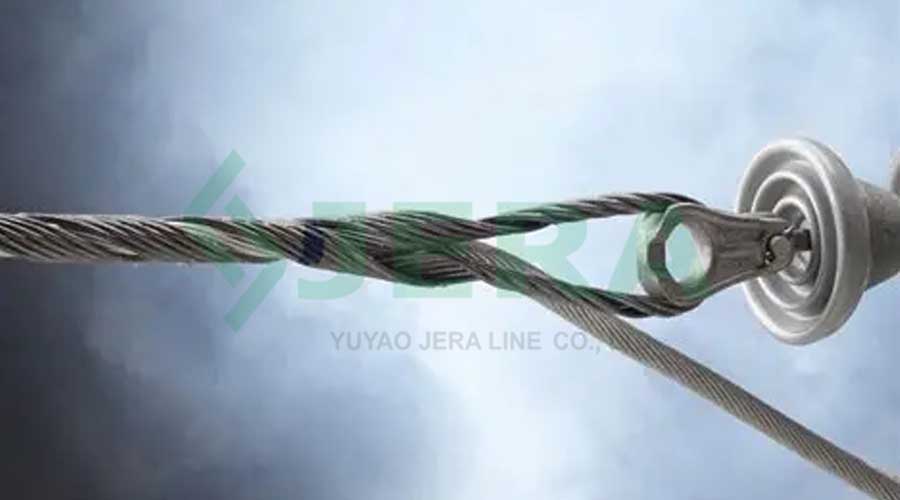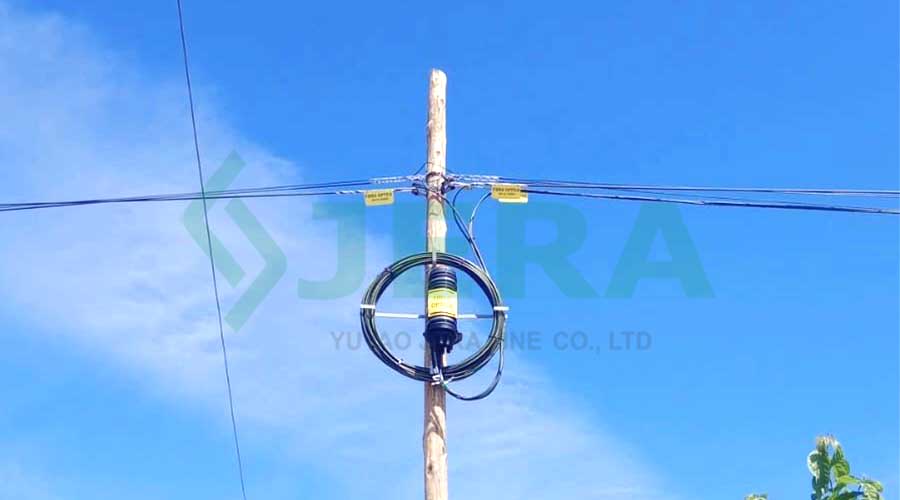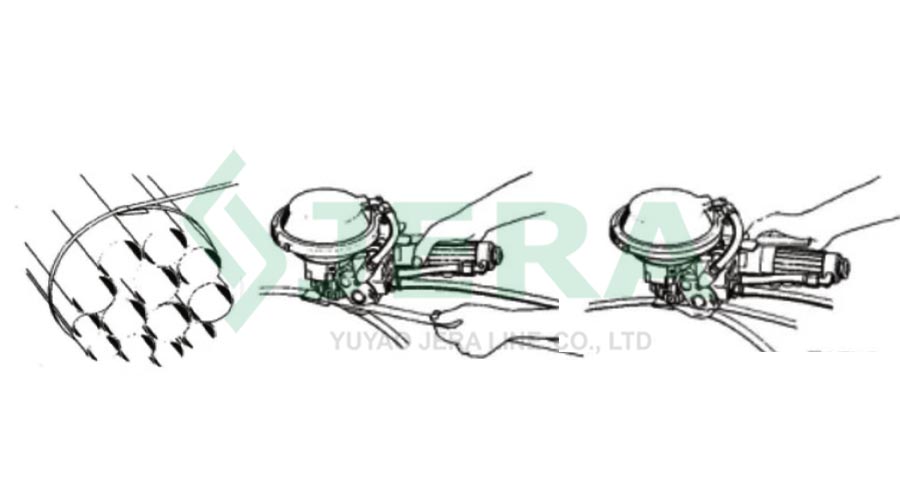Fiber optic cables play a crucial role in modern telecommunication networks. In the market, there are two primary categories: single-mode and multi-mode fiber optic cables. Multi-mode fibers are prefixed with OM (Optical Multi-mode), while single-mode fibers are prefixed with OS (Optical Single-mode).
According to the ISO/IEC 11801 standards, there are four types of multi-mode fibers: OM1, OM2, OM3, and OM4. For single-mode, the standard defines OS1 and OS2. Among them, OS2 is the most widely used single-mode type. The following sections explain the key differences between OM and OS2 fiber optic cables.
1. Core Diameter and Fiber Types
One of the most important distinctions is the core diameter:
-
Multi-mode (OM): Typically 50 µm or 62.5 µm
-
Single-mode (OS2): Typically 9 µm
This difference affects how many light modes can travel through the fiber: multi-mode supports multiple light paths, while single-mode only supports one, reducing distortion.
Optical Fiber Core Diameters
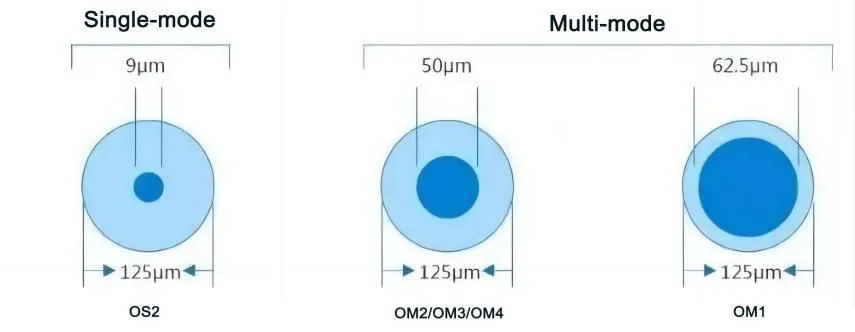
Fiber Types

2. Attenuation
Attenuation refers to signal loss during transmission:
-
OM multi-mode: Higher attenuation due to a larger core that causes multiple reflections and scattering.
-
OS2 single-mode: Lower attenuation because the narrow core keeps light transmission stable with fewer reflections.
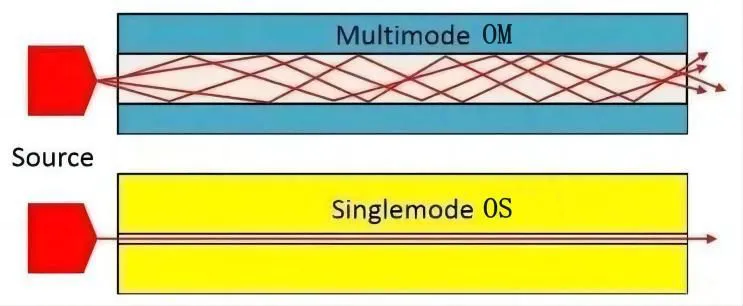
3. Transmission Distance
The effective transmission distance is another critical factor:
-
OS2 single-mode: Supports distances of 5 km or more, making it ideal for long-distance communication lines.
-
OM multi-mode: Generally limited to around 2 km, suitable for short-distance networks in buildings or campuses.
|
Fiber type
|
Distance
|
|
100BASE-FX
|
1000BASE-SX
|
1000BASE-LX
|
1000BASE-SR
|
40GBASE-SR4
|
100GBASE-SR10
|
|
Single-mode
|
OS2
|
200M
|
5KM
|
5KM
|
10KM
|
—
|
—
|
|
Multi-mode
|
OM1
|
200M
|
275M
|
550M (Need mode conditionning patch cord)
|
—
|
—
|
—
|
|
OM2
|
200M
|
550M
|
—
|
—
|
—
|
|
OM3
|
200M
|
550M
|
300M
|
100M
|
100M
|
|
OM4
|
200M
|
550M
|
400M
|
150M
|
150M
|
4. Wavelength and Light Source
Light sources and wavelengths differ between OM and OS2 fibers:
-
OM multi-mode: Uses lower-cost LEDs or VCSELs, typically operating at 850 nm and 1300 nm.
-
OS2 single-mode: Operates at 1310 nm or 1550 nm, requiring more expensive laser sources but offering higher stability.
5. Bandwidth
OS2 single-mode provides theoretically unlimited bandwidth with low attenuation, supporting high-speed data transfer over long distances. In contrast, OM multi-mode is limited by modal dispersion, reducing bandwidth capacity, especially for long-haul transmissions.
6. Cable Sheath Color
According to TIA-598C standards, fiber optic cables have distinct sheath colors:
-
OS2 single-mode: Yellow jacket
-
OM1 & OM2 multi-mode: Orange jacket
-
OM3 & OM4 multi-mode: Aqua jacket

Conclusion
In summary, OS2 single-mode fibers are best suited for long-distance, high-capacity networks thanks to their low attenuation and high bandwidth. OM multi-mode fibers, on the other hand, are cost-effective solutions for shorter distances such as inside buildings or data centers. Choosing between OM and OS2 depends on network design goals, performance needs, and budget considerations.





















.png)









